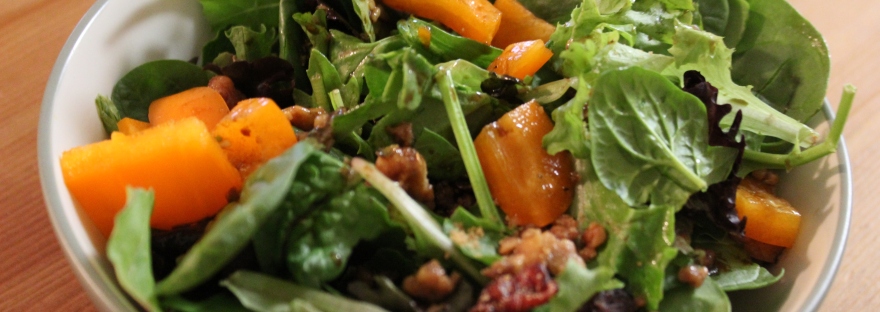Dietitians often use the “Healthy Plate,” combined with portion control, to help people plan healthy meals in order to help control their blood sugar, lower cholesterol and to lose weight. The healthy plate is similar to the USDA’s “My Plate,” except that half of the plate is just vegetables, instead of fruits and vegetables. The other half of the plate is divided evenly between lean proteins and high carb (and hopefully high fiber!) foods. Also, corn, potatoes, and peas count as a starch, not a vegetable. Beans and legumes count as a protein and a starch. There you have it- the healthy plate in a nutshell!
How does the healthy plate method help with weight loss and blood sugar control? Vegetables are high in fiber, water, vitamins, minerals and antioxidants, and very low in calories. As you eat more vegetables, you will naturally start eating less of the high calorie, high carb, high fat foods that contribute to chronic disease and weight gain when consumed in excess.
The main problem of the typical American diet, is that it is full of high fat proteins and highly refined carbs, with very little room for vegetables. If you are like most Americans, as far as your diet goes, Incorporating more vegetables into your diet is the #1 most important thing you could do to improve your health and your family’s health.
Since veggies are so important, I decided to share what eating the healthy plate way would look like throughout the day and give you some tips to get started.
Breakfast:
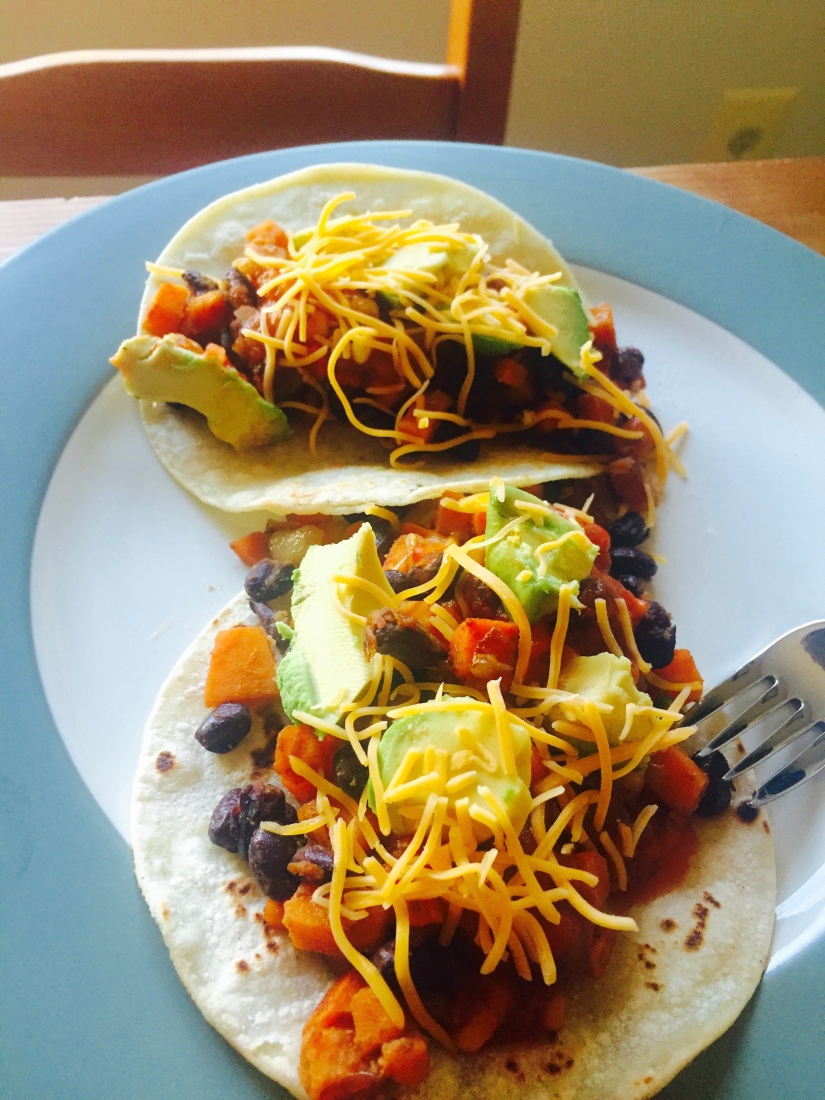
- Toss a handful of spinach into the pan while frying your eggs.
- Toss in a handful of spinach or kale to your favorite Smoothie Recipe.
- Make a Veggie Quiche with a potato crust instead of a normal crust.
- Try Breakfast Succotash
- Make a Breakfast Burrito: Saute onions, green and red peppers, and a diced sweet potato in olive oil. Heat until soft. Add black beans. Combine until heated through. Serve with avocado, salsa and cheese on corn tortillas.
- Eating out? Get a veggie omelet!
Lunch: 
- Make a meal out of your salad. Salads are a great way to fill up on vegetables, but they don’t always fill me up. To make a salad a complete meal, add some lean proteins like baked or grilled chicken, a hard boiled egg or roasted chickpeas. Then add a high fiber carb, like cooked quinoa, corn or more beans. For more filling power, add a sprinkling of sunflower seeds, almonds or avocado.
- Add leftover steamed or roasted veggies from the night before to your lunch sandwich or wrap
- Take vegetable soup or stew to work with you.
Snacks: Try Veggies and Hummus or veggies and dip
Dinner: Veggie should be the main event at dinner time!
- Start Dinner with a simple side salad
- Sauté or Roast Fresh Vegetables to go with your dinner.
- Steam frozen vegetables in the microwave, sprinkle with some cheese or your favorite dressing.
- Stir extra frozen veggies into pasta, rice or casseroles before cooking.
- Scroll down for more inspiration!
-
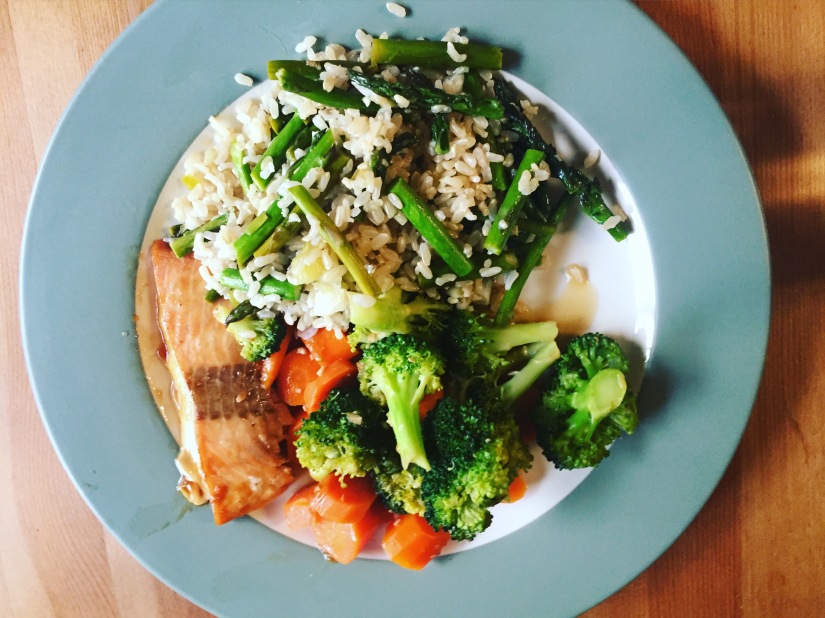
Rice with asparagus, salmon, broccoli and carrots
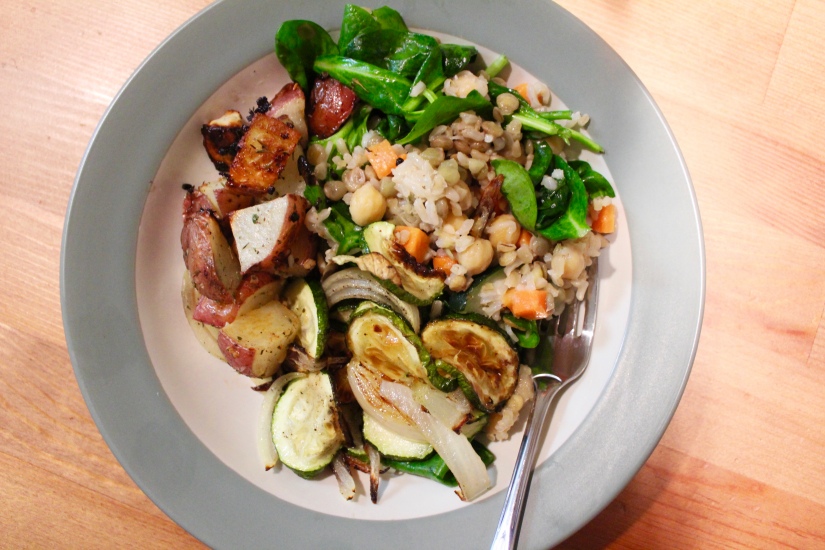
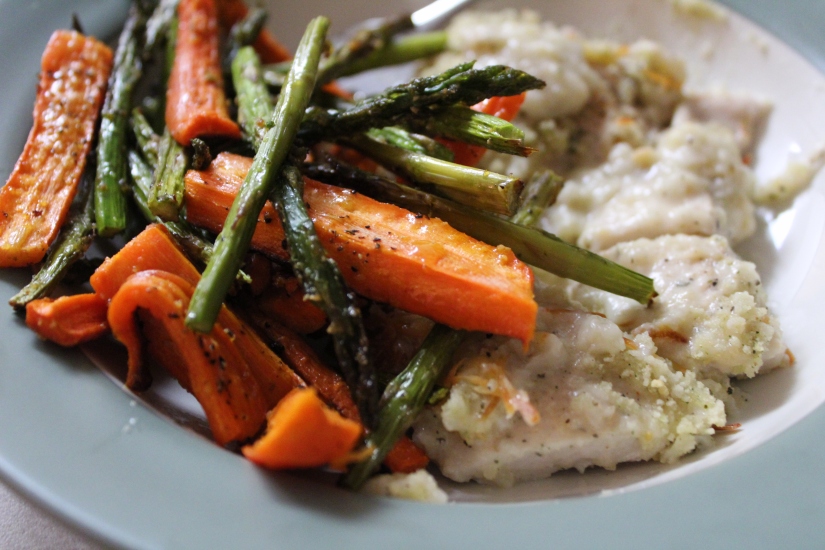
What’s your favorite way to eat vegetables? Please post a comment! I’d love to hear from you!
